An encounter with Hamburg’s Reeperbahn is akin to assimilation into a real-life kaleidoscope where bright lights, mass revellers and shills touting bars, night clubs or strip joints combine in a single multi-sense overload. The tumultuous thoroughfare is dedicated to excess.
The Reeperbahn, the main drag of Hamburg’s St. Pauli district, approximates two garish, illuminated British seafront parades – maybe Blackpool and Southend – that have been elongated and then arranged face-to-face on each side of a street with emporia such as Amsterdam Headshop, beer halls and pole-dancing venues punctuating the opposing vistas. On top of which is neon sign after neon sign shouting the unavoidable keyword SEX.
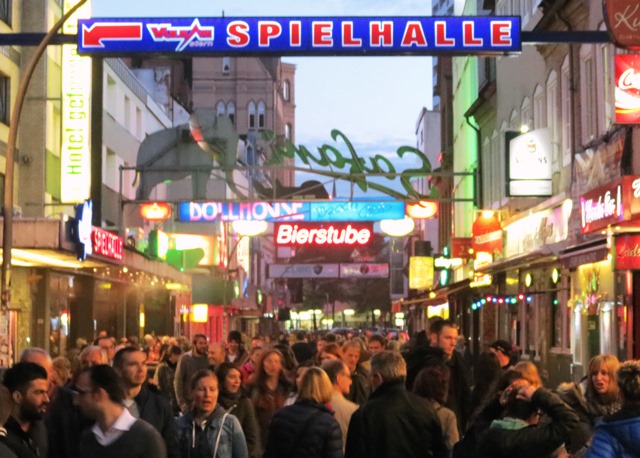 This gaudy ribbon, and the bustling, hustling streets which run off Reeperbahn such as Grosse Freiheit (pictured right), are the setting for the fantastic Reeperbahn Festival which, in its 10th year, is one of continental Europe’s two (the other is the Netherlands’ Eurosonic) prime showcase festivals. At any given moment, a band, DJ or solo singer will be doing their stuff on one of 55 stages at 47 venues. Anything goes: Finnish hip-hop, Canadian Americana or The Courettes (pictured below left), a wild Danish White Stripes reboot, are all on offer.
This gaudy ribbon, and the bustling, hustling streets which run off Reeperbahn such as Grosse Freiheit (pictured right), are the setting for the fantastic Reeperbahn Festival which, in its 10th year, is one of continental Europe’s two (the other is the Netherlands’ Eurosonic) prime showcase festivals. At any given moment, a band, DJ or solo singer will be doing their stuff on one of 55 stages at 47 venues. Anything goes: Finnish hip-hop, Canadian Americana or The Courettes (pictured below left), a wild Danish White Stripes reboot, are all on offer.
Such cross-border musical pollination is fitting as Hamburg is the port city where, in 1960, The Beatles began the two-year apprenticeship which laid the foundation for their worldwide success. It is estimated that The Fabs spent 800 hours on Hamburg’s stages. At Reeperbahn Festival, most acts have about 40 minutes to make their case.
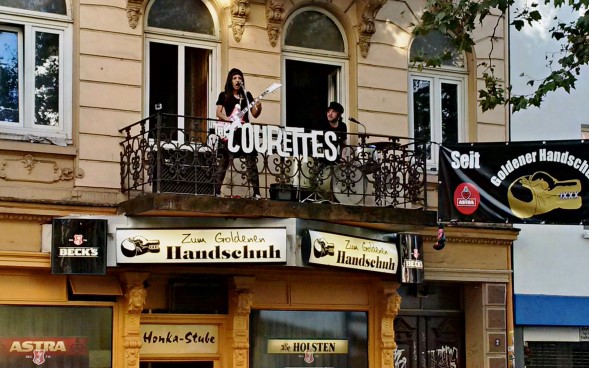 Last year, theartsdesk noted that Iceland’s Airwaves festival was “for anyone with Fear of Missing Out…the stuff of bad dreams.” With Reeperbahn Festival, the FOMO-afflicted would be in meltdown. The only possible way to tackle this carnival of potential delights is to follow one’s nose. Choices have to be made, and sometimes as a result of not getting in to shows. Venues can be filled to capacity. Once that is the case, no one else is entering.
Last year, theartsdesk noted that Iceland’s Airwaves festival was “for anyone with Fear of Missing Out…the stuff of bad dreams.” With Reeperbahn Festival, the FOMO-afflicted would be in meltdown. The only possible way to tackle this carnival of potential delights is to follow one’s nose. Choices have to be made, and sometimes as a result of not getting in to shows. Venues can be filled to capacity. Once that is the case, no one else is entering.
But no matter. The highlights more than offset frustrations about what may have been missed. And it turned out that one of the festival’s most highly anticipated performances was also one of its most splendid. Before an expectant crowd at the large Ubel & Gefärlich venue, Norway’s electro-inclined, moody singer-songwriter AURORA (main picture) was both assured and wonkily eccentric. Live and lost inside her songs of imminent death and running with wolves, she moves involuntarily in the same way as Cocteau Twins’ Liz Fraser: odd, semaphore-like arm movements are supplemented with dancing resembling that of the Twenties flapper. Totally unselfconscious, she suddenly talks about enjoying the sushi she had eaten earlier in the day. Her voice is correspondingly natural and uncultivated. With a bell-like resonance, it carries instantly memorable melodies. Her performance and the audience’s reaction suggest she is on the cusp of a breakthrough into the mainstream.
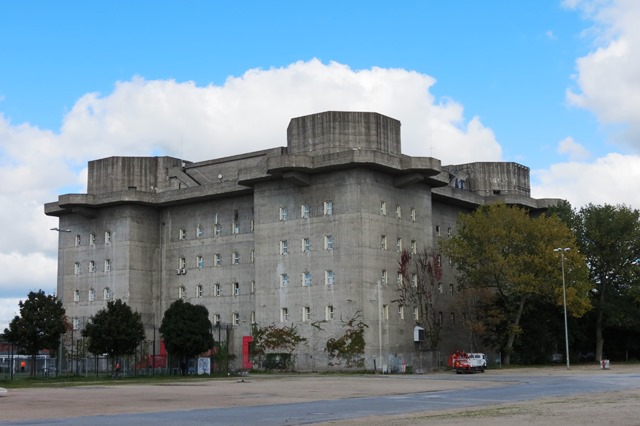 From its interior, Ubel & Gefärlich appears to be a typical venue: bar down one side, stage at one end and a raised area at the other. It is on a fourth storey and has to be reached via a lift. The unusual setting is the result of it being within the brooding, massive concrete hulk that is the 75m square Flakturm IV (flag tower, pictured right), a combination anti-aircraft gun emplacement and bunker constructed in 1942, a few hundred metres north of the Reeperbahn. Its reinforced concrete walls are 3.5m thick. Nowadays, the tower is an arts complex and media centre.
From its interior, Ubel & Gefärlich appears to be a typical venue: bar down one side, stage at one end and a raised area at the other. It is on a fourth storey and has to be reached via a lift. The unusual setting is the result of it being within the brooding, massive concrete hulk that is the 75m square Flakturm IV (flag tower, pictured right), a combination anti-aircraft gun emplacement and bunker constructed in 1942, a few hundred metres north of the Reeperbahn. Its reinforced concrete walls are 3.5m thick. Nowadays, the tower is an arts complex and media centre.
Also freighted with historical import and co-opted by the festival is the Indra-Club, along the east side of Grosse Freheit. This is where, on 17 August 1960, The Beatles made their German debut. For Reeperbahn Festival, the Danish band Awesome Welles didn’t show any evidence of the weight of history bearing down upon them as they motored through their jagged-edged melange of post-punk, Oasis and anthemic choruses. The street frontage of Indra is as it was in 1960 and the worn interior decor is certainly old, but there must have been periodic refurbishments. Still, though, the down-at-heel and surprisingly small venue – 200 capacity, if that – carries its place in world history with a casualness befitting the fact that it is still in use.
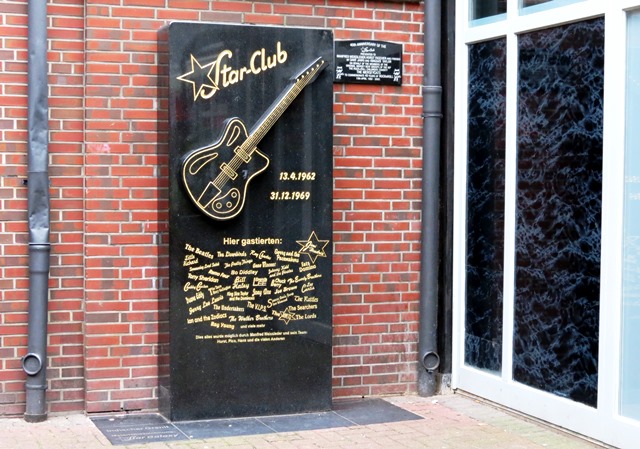 The same cannot be said for the Star-Club. A little further down Grosse Freheit towards Reeperbahn, this was where The Beatles, The Jimi Hendrix Experience, Jerry Lee Lewis and Little Richard all played seasons between its April 1962 opening and its closure at the end of 1969. The building burnt down in 1987 and is memorialised by a depressing gravestone-like marble slab (pictured left) in a yard behind its nondescript brick replacement. This forlorn acknowledgement is a pity as, Beatles connection aside, the Star-Club was a powerhouse of popular culture which spawned a chain of clubs of the same name elsewhere in Germany and had a record label which sported hit-makers like local stars The Rattles and international luminaries Dave Dee, Dozy, Beaky Mick & Tich and The Walker Brothers. The site of the original Star-Club deserves more.
The same cannot be said for the Star-Club. A little further down Grosse Freheit towards Reeperbahn, this was where The Beatles, The Jimi Hendrix Experience, Jerry Lee Lewis and Little Richard all played seasons between its April 1962 opening and its closure at the end of 1969. The building burnt down in 1987 and is memorialised by a depressing gravestone-like marble slab (pictured left) in a yard behind its nondescript brick replacement. This forlorn acknowledgement is a pity as, Beatles connection aside, the Star-Club was a powerhouse of popular culture which spawned a chain of clubs of the same name elsewhere in Germany and had a record label which sported hit-makers like local stars The Rattles and international luminaries Dave Dee, Dozy, Beaky Mick & Tich and The Walker Brothers. The site of the original Star-Club deserves more.
Yet this seeming lapse shouldn’t be a surprise. Reeperbahn and its orbit are about the instant, the current and not looking back. The gratification on offer – whether via booze, fast food, sex or all three – is fleeting. Of course, the festival trades on the area’s musical history, but it is also firmly focused on the now.
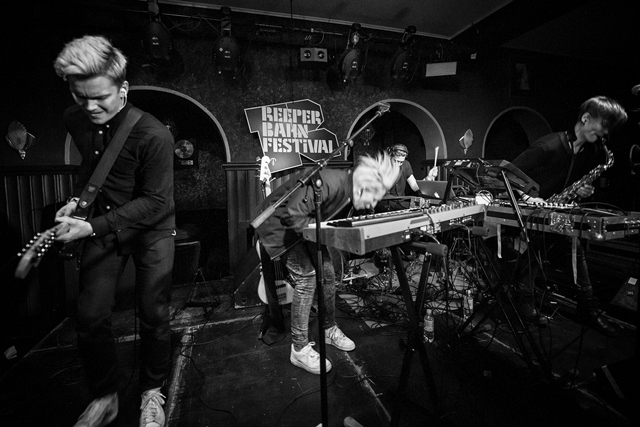 Few bands could be more now than Iceland’s Vök (pictured right, photo by Florian Trykowski). At the Pocca Bar, they sound like no one else. Although their vocals have a recognisably Icelandic cadence, they fuse dub bass guitar, Balearic keyboards, drums with the attack of My Bloody Valentine and plangent, shoegazing guitar into a thrillingly unique whole. Their spacey groove heads for the feet and the emotions. As moody, and playing the Imperial Theatre, but not quite fused into a cohesive statement yet (the Kid A Radiohead dynamics will be soon sloughed off) is Germany’s Josin, who would sound at home on a label like Kompakt or Bella Union.
Few bands could be more now than Iceland’s Vök (pictured right, photo by Florian Trykowski). At the Pocca Bar, they sound like no one else. Although their vocals have a recognisably Icelandic cadence, they fuse dub bass guitar, Balearic keyboards, drums with the attack of My Bloody Valentine and plangent, shoegazing guitar into a thrillingly unique whole. Their spacey groove heads for the feet and the emotions. As moody, and playing the Imperial Theatre, but not quite fused into a cohesive statement yet (the Kid A Radiohead dynamics will be soon sloughed off) is Germany’s Josin, who would sound at home on a label like Kompakt or Bella Union.
At the Rock Café St. Pauli, Finland’s K-X-P demonstrated why their epic synthesis of Krautrock repetition, a rave pulse and glam rock stomp should be left to no one else. A more direct approach to dynamics comes from Danish male-female duo The Courettes, who reverse the gender roles of White Stripes to offer an important reminder that Jack and Meg were never better than when they were blasting garage rock. Perched on the narrow balcony of a first-floor apartment while playing, Courettes should have spilled over its edge to plop onto the heads of the crowd gathered below yet, amazingly, did not.
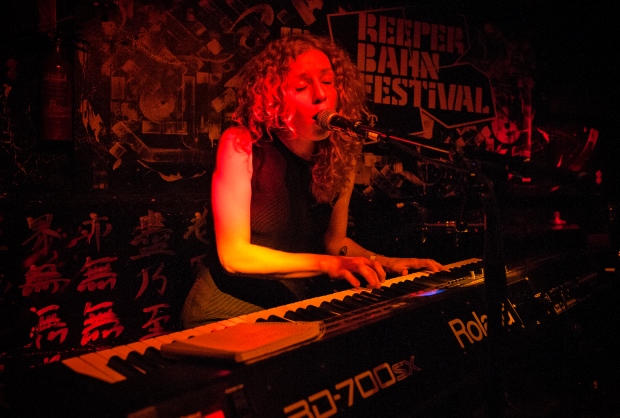 An event the scale and size of Reeperbahn Festival encourages the grand gesture: the equivalent of shouting loud to attract attention. The British band Sunset Sons do so with their ascending choruses and clap-along verses but such trifling fast-food music is easily forgotten. Subtlety and exquisite melodies will always linger longer in the air and the memory. In the form of Lithuania’s Alina Orlova (pictured left, photo by Florian Trykowski), at the tiny Molotow Karatekeller, the festival revealed that it has a place for naked intensity.
An event the scale and size of Reeperbahn Festival encourages the grand gesture: the equivalent of shouting loud to attract attention. The British band Sunset Sons do so with their ascending choruses and clap-along verses but such trifling fast-food music is easily forgotten. Subtlety and exquisite melodies will always linger longer in the air and the memory. In the form of Lithuania’s Alina Orlova (pictured left, photo by Florian Trykowski), at the tiny Molotow Karatekeller, the festival revealed that it has a place for naked intensity.
Behind a Roland keyboard which substituted for a piano, the mesmerising Orlova channelled a succession of songs suggesting the expression of Chopin and the melodic precision of a folk music which accompanies formation dance. In practice, the result is a gothic take on the singer-songwriter approach which positions Orlova as a one-off who could, if brought to the world with care, have the impact of the similarly single-minded Antony Hegarty or Joanna Newsom.
There is no doubt Reeperbahn Festival more than has the goods. Anyone could take anything from it. Nonetheless, being distracted by the constant spectacle of where it is held is a danger. The undoubtedly significant history is not so apparent, so less a potential diversion and more an undercurrent. But if Reeperbahn Festival comes up on the agenda, there is only one way to avoid meltdown: cut through the commotion of the Reeperbahn itself like an icebreaker and head for the music.

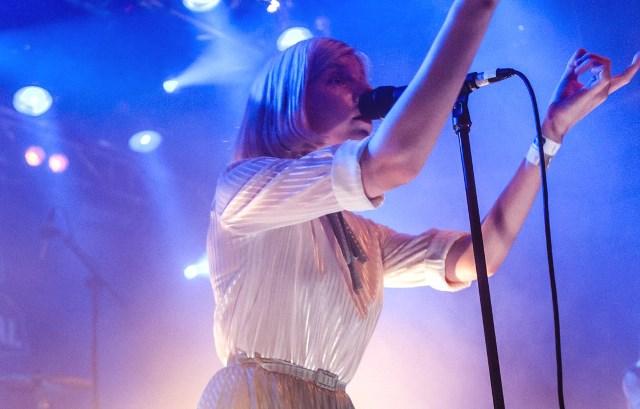











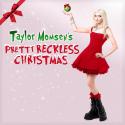
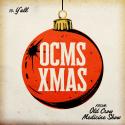
Add comment